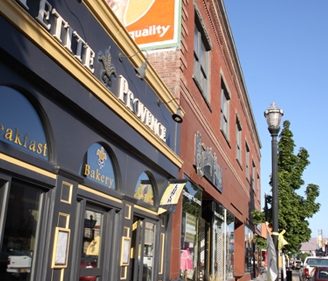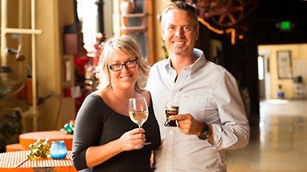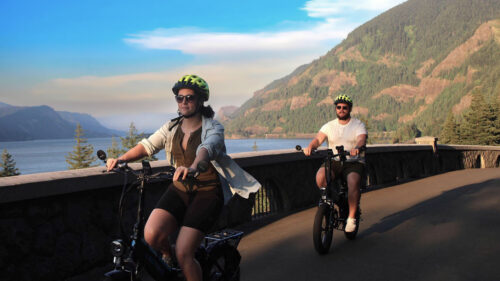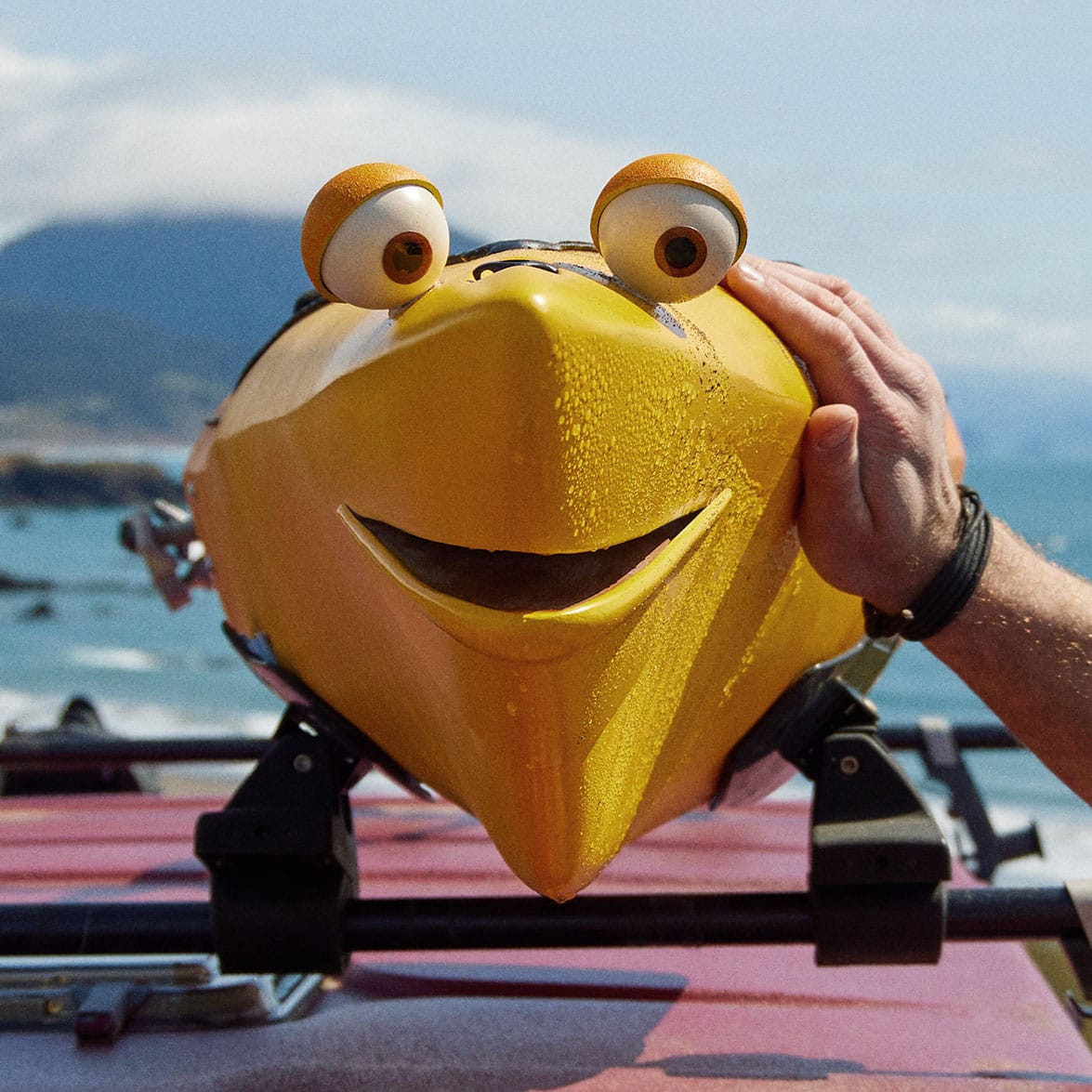An eastward drive from Portland through the Columbia River Gorge brings a few colorful surprises. There is, of course, the landscape’s gradient shift from evergreen to golden. An hour spent cruising along the river on Interstate 84 sees the moss-draped cliffs and basalt spires of the national scenic area give way to the sagebrush-speckled hills of the Columbia Plateau. And then there is The Dalles, an unexpected home to the dazzling National Neon Sign Museum, which only recently opened its doors to the public.
The largest city in the Gorge has a lot going for it — its handsomely revitalized downtown harbors new cafes, craft breweries and a restored art deco theater. But this burg of just under 16,000 people still seems a peculiar location for a museum so national in scope and dedicated to such a widely influential medium as neon advertising. At first David Benko, the museum’s Vancouver, Washington-based founder and curator, thought so too.
“Honestly, The Dalles was often a town I would pass through on long road trips,” he chuckles, as he walks me through the museum’s four galleries. “I’d stop here for gas and coffee, but I never spent much time exploring beyond that.”
That all changed in 2015 when a friend slipped him a piece of paper with the address of the former Elks Temple, saying it’d be the perfect space to house Benko’s sprawling collection of historic neon signage. Benko slid the note into his wallet. He gave it little thought until he Googled the building’s address one sleepless night. Up popped an image of a regal, museum-like facade. He woke his wife at 2 a.m., telling her they needed to take a trip out to The Dalles in the morning.
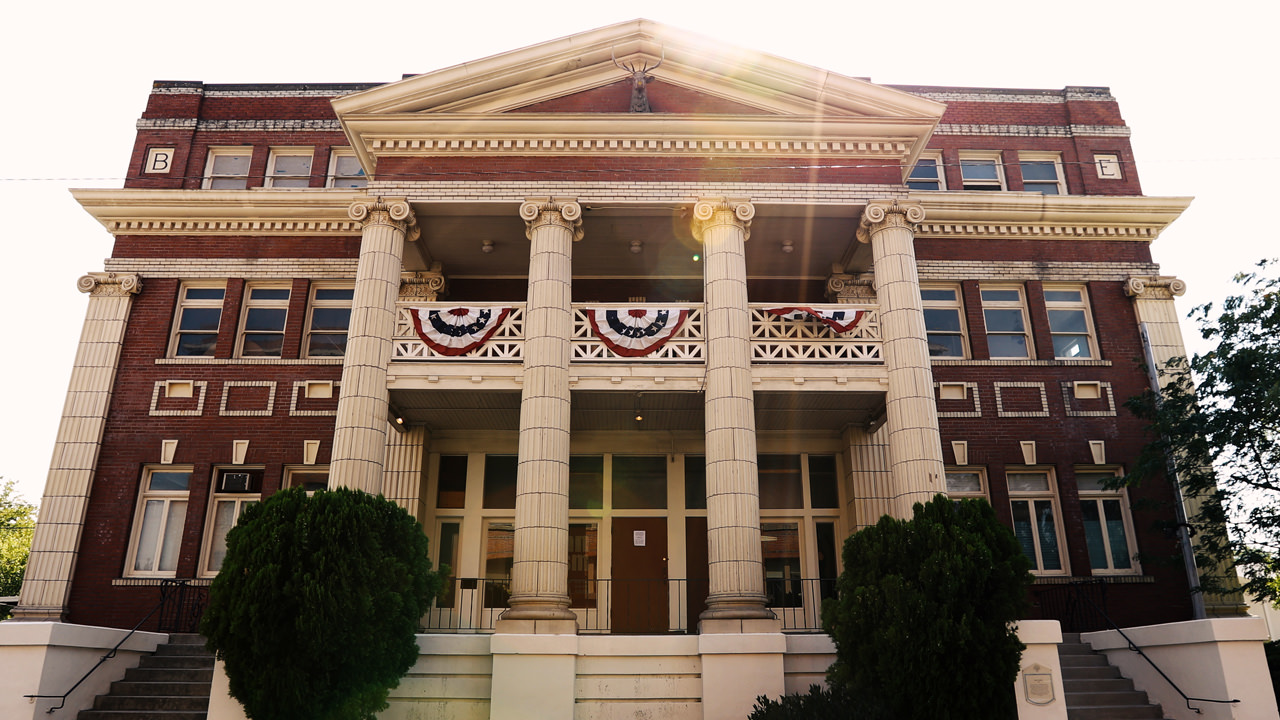
Electric Dreams, Seeing Sparks
An icon of the city’s turn-of-the-century growth, the colonial-style brick building had sat vacant for years. The crumbling interior badly needed a total renovation, but the grand rooms still whispered possibility. As he stepped through the building’s three floors, Benko visualized some of his most noteworthy signs adorning the spaces — he could mount the “Town Pride Frozen Custard” sign here and the animated “Dog n Suds” sign over there. The soon-to-be galleries were taking shape in his mind.
As a sign maker and tube bender by trade, the list price — around $400,000, he recalls — was out of his budget. Thankfully, the real estate agent connected him with local officials, and Benko found himself in a city receptive to ambitious goals.
“We started talking with people from the city,” he says. “Since then, I don’t think I’ve met a person in The Dalles I don’t like yet.”
The city decided to purchase the 20,000-square-foot building and sold it to him for a symbolic $1 — on the condition that he’d bring his vision to life. So Benko rolled up his sleeves. Over the past two-plus years, he has secured donations and invested much of his own money and sweat into an extensive remodel, totaling more than half a million dollars. That doesn’t count the value of his personal collection of some 300 sought-after signs, many of which he now displays in the museum.
It’s a collection that he’s grown since his college days, when his gateway drug was neon clocks, which led to neon signs and then to a neon apprenticeship with Seattle sign legend Ron Cole. Over the last three decades of his career, Benko has earned a national profile in the sign world, mingling with the most famous neon designers of the 20th century and displaying pieces from his collection around the country. He seems to know just about everyone in his industry on a first-name basis. He’s spent the past two decades running his own sign company, Rocket City Neon, where he has designed or restored some of the most totemic neon in the Pacific Northwest, including the Crystal Ballroom, the Bagdad Theater & Pub and the Laurelhurst Theater in Portland, as well as Salem’s Historic Grand Theatre.
In the past decades, he has seen neon come in and out of fashion. In the 1980s, neon was everywhere in pop culture, from fluorescent-colored clothing to the hazy neon aesthetic of the early-MTV era. For a few years it dipped in popularity, with LED lights and jumbotrons taking the signage spotlight. Consequently, there are far fewer young people entering the trade. But neon is once again experiencing “a great resurgence and renaissance,” Benko says, and nearly every tube bender he knows is booked up months out. Benko credits the medium’s enduring allure to the magic of glowing colors.
“People are being drawn to the nostalgia of neon,” he says, “like a bug being drawn to a zapper.”
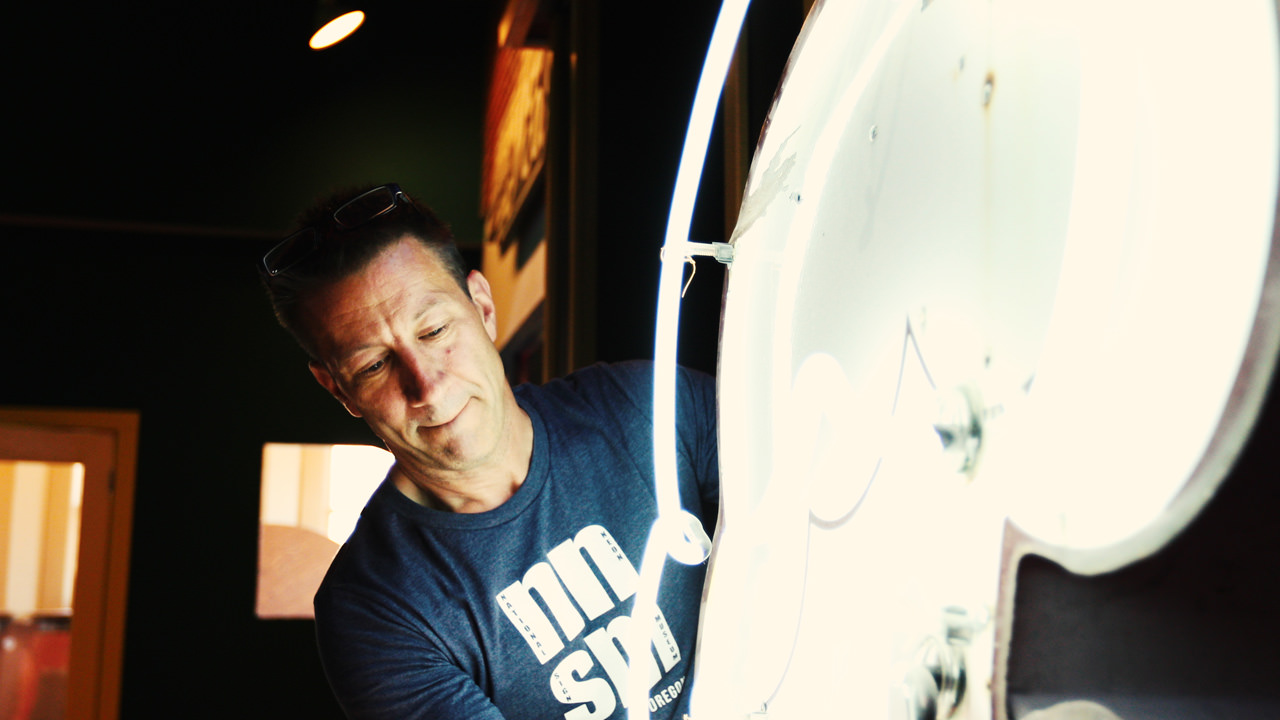
The Behind-the-Signs Story
“Welcome Neon Enthusiasts,” a marquee sign reads in the lobby, luring visitors into a theater, which briefly narrates the backstory of the neon revolution. From there, a series of galleries illuminates the history of lit signage, from the pre-neon days of light-bulb signs in the late-1880s through to the glamorous outburst of neon in American cities during the Great Depression. Next year Benko plans to open an educational center in the basement, which includes three classrooms and a working neon plant, where he intends to offer an apprenticeship program to encourage more young people to take up the craft.
Unlike the handful of other similar venues such as the internationally famous Neon Museum in Las Vegas, the National Neon Sign Museum aims to give visitors an appreciation for “how signs have definitely influenced America and American life, and how Americans have definitely influenced signs,” Benko says. That emphasis on telling the story of the sign industry and art form puts him in a category of his own.
“There are some other amazing sign collections out there,” says Benko, who previously worked as the curator of Cincinnati, Ohio’s American Sign Museum. “In some cases, though, those collections come across as just that: collections. When you walk away, did you learn something or just see a bunch of signs on display?”
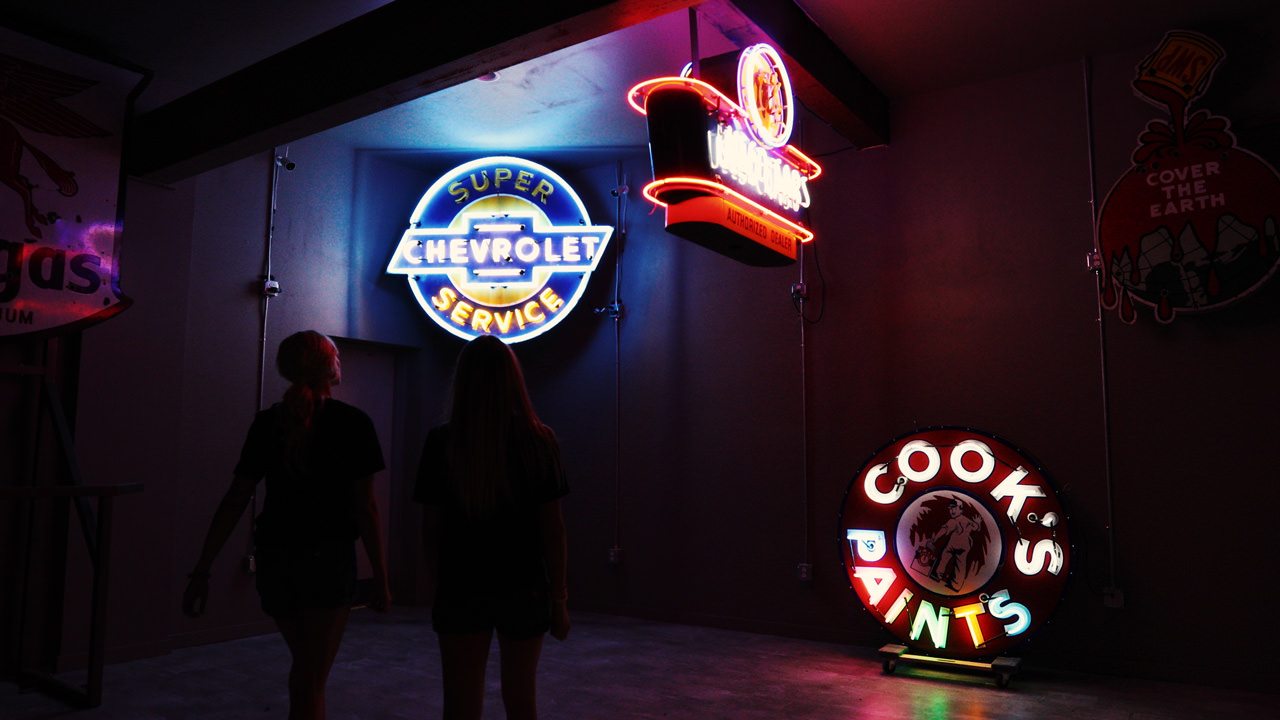
I first toured the museum in the hectic weeks before its grand opening, as unlit signs sat isolated in shadowy corners and workers tinkered with wiring in the walls. Even as Benko made the final touches to the primary galleries, the space buzzed with the electricity of a manifest dream.
Benko’s mission is not to overwhelm with the maximum wattage possible, nor merely to mesmerize with the alchemic art of lighting up glass tubes with electrodes and gas. He considers those easy moves — simply loading a bunch of his favorite signs into a warehouse and flipping a breaker. Instead, he’s flexing his curatorial muscles, which calls for a level of elegant, artistic restraint. As much a learned historian as a neon craftsman, Benko weaves historic documents and artifacts into each gallery. Rather than displaying his rarest or most valuable signs, he wants to show the most representative; how small towns in America looked as electric signage evolved from the simplicity of the Thomas Edison era (bearing single words such as “Hotel” or “Hardware”) to the emergence of elaborate, animated neon signs.
No exhibit in the museum makes that clearer than the third-floor ballroom, an airy gallery that contains an entire town center in miniature form — presenting a tasteful selection of signs that mimic what Main Streets throughout the country might’ve looked like in the mid-20th century. Benko designed a cluster of storefronts that include a TV-repair store, a jewelry shop and a diner, each minimally lit with period-appropriate signs from his collection. The exhibit highlights how the presence of independent businesses — the local storekeepers and the craftspeople’s shops — defined small-town commerce for decades. It’s a town not too unlike what The Dalles might’ve looked like.
“The Dalles was screaming with signs probably up until the 1970s — and we’re bringing it back,” Benko says. “We’re going to light the town up again.”
